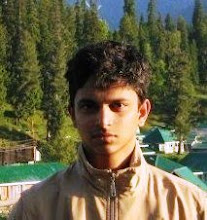Why is the death of a Dutch Chestnut being mourned so deeply?
Nigel Britto
It was the last living remnant of the Anne Frank story. The iconic Chestnut tree in Amsterdam that inspired a lonely Jewish girl as she wrote her secret diary that was to shake the conscience of the world, collapsed in a furious storm this week.
Conservationists, hell-bent on protecting it as a 'Symbol of Hope', had helped it battle fungus and moths by encasing its trunk in steel. Over 150 years old, it had borne silent witness to war, prejudice and unprecedented genocide. Conservationists had hoped that it would live another two decades at least, but that was not to be.
The tree's death comes months after the passing of Miep Gies, the heroic Catholic woman who helped the Franks during the two years the family hid in the annexe before they were betrayed. Miep was also the person who discovered and preserved the diary.
Now that it's left to the next generation, I wonder whether the death of the tree in some way marks the end of the Anne Frank story. Slowly but surely, despite enormous evidence to the contrary, the band of Holocaust-deniers is growing, especially in the middleeast. Thankfully, in the US, the powerful Jewish lobby has ensured that Hiter's Final Solution that sent six million Jews to their death won't be forgotten for a long, long time.
I was born a good seven years after Otto Frank, Anne's father and custodian of her legacy, died in 1980. I never had the good fortune to meet Miep Gies, nor have I been anywhere near Amsterdam. Why then did the fall of that tree feel like a personal loss?
I believe the answer lies in the power of Anne Frank's writings. To me, her diary is the most touching chronicle of the horrors of war. Every child studies about WWII in school, but only those who read the diary (along with other masterpieces by Primo Levi and Elie Wiesel), come anywhere close to experiencing its human agony.
I first read The Secret Diary of Anne Frank three years ago, although I was introduced to it when an excerpt was included in our school syllabus in Goa, many years ago. Unimaginative teachers made it sound like just another lesson, and most of my guy friends dismissed it as 'girly', a misconception that persists and something that I'm still taunted about. When I finally read the book, however, I realised it was not merely the ramblings of a frustrated teen. It was an ambitious literary project. Anne was an extraordinary writer, for any age. She showed me the consequences of prejudice, widely prevalent even today, and how far astray it can lead us. She put a face to genocide, and a face to hope. I believe Dear Kitty, which is how she addressed her diary, should be required reading in every school around the world.
She had enough cause to rail against the world and how the people in it sucked. Instead, she wrote: "Despite everything, I believe that people are really good at heart. I simply can't build up my hopes on a foundation consisting of confusion, misery and death." Like any other ambitious 13-year-old she dreamed of "the day when she'd be able to realise her ideals". A year after she wrote that, she died of typhus in the Bergen-Belsen concentration camp in Germany. Of her family, only her father survived.
Anne's unflagging positivism in the face of extreme adversity was like a slap in the face for me and all those who are eternally depressed about the state of our country and its leaders. Instead of ranting about the concentration camps and gas chambers, Anne found comfort in things like birds in the sky and the Chestnut tree that she mentions thrice. "I feel the suffering of millions. And yet, when I look up at the sky, I somehow feel that everything will change for the better, that this cruelty too will end, that peace and tranquillity will return once more." If I still believe India can be saved, it's largely because of a young Jewish girl with dark eyes and a heart that was stronger than Hitler's Holocaust.
This article was first published in The Times of India's Crest edition dated August 28, 2010.



